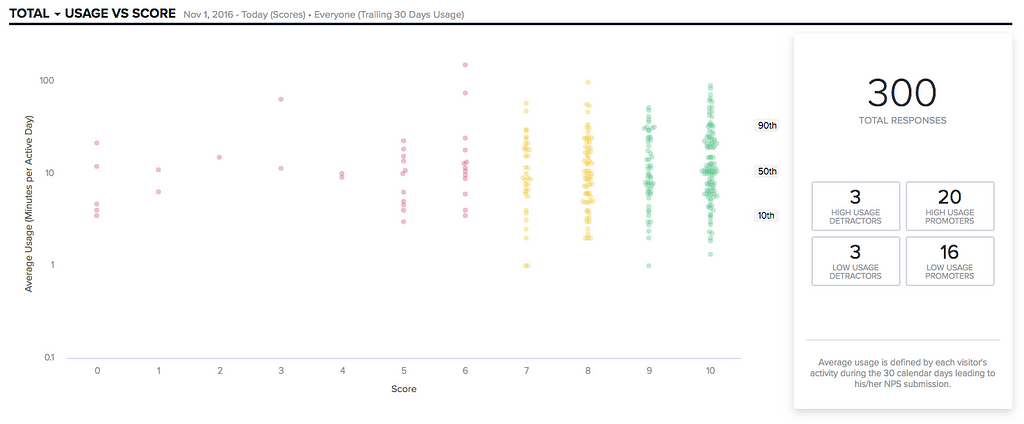Latest news about Bitcoin and all cryptocurrencies. Your daily crypto news habit.
More common than not, Client Success has been owning NPS (Net Promoter Score) in the B2B world. This is good, but not great. I’d like to see more product leaders owning it, understanding it, and building a system around it …
Here’s why:
- You are responsible for developing a product that creates delight , a product that customers love. NPS measures the “likelihood to recommend,” which is a great indicator whether you’re on the right trajectory.
- You own the end-to-end experience . Customer Success does not. Customers don’t think just in terms of the in-product experience. What if Uber only focused on their app, but not the experience of riding an Uber? It would fail.
- You will demonstrate leadership by owning this metric and being accountable. You will help your company become a more product and design-driven company.
You should still maintain the close partnership with Customer Success to execute on an effective Net Promoter System SM — one that maintains a closed feedback loop with your customers.
Taking NPS to the next level
When building new products, optimizing a particular customer experience, or trying to decide which features to sunset, I have learned that the best data-backed recommendation comes only after investigating several data points and options, and then triangulating information. Most times, this combination of metrics presents a new lens that brings additional confidence: a trustworthy insight that tends to be quite actionable, often driving marked improvements.
As a product team, we’ve been asking ourselves a lot of questions around NPS — about how to derive better insights and develop pattern recognition about our customers at the macro level. We’ve been curious to know how our Detractors and Promoters used the product. What were the profiles and/or patterns of Promoters? How different were they from Detractors? We knew that by marrying a few metrics, new questions would develop and additional insights would emerge.
Here are three ways we have approached NPS — both in terms of improved analytics and visualizations to make NPS more useful and actionable.
NPS by active use
The scatterplot [to left] represents the combination of both product usage and NPS. We wanted to understand our “hotspots” — Detractors with low usage, Promoters with high usage, etc. Any combination of note was highlighted. From there, we were able to drill down into each customer to better understand their behavior in the product: time on site, features and pages used, active days — all in the context of their Net Promoter Score. This analysis helps us tie user sentiment with user behavior — a critical step often overlooked.
Based on this visualization, we decided to run a quick campaign among customers who were in the 90th percentile of active use, but scored us a 7 or 8 NPS. What was keeping them from being a promoter? Being able to specifically target those folks for feedback focused our efforts and planning.
NPS by “Role”
The other powerful capability is to measure NPS by segment. Like most product teams, we are building for a persona. We are designing and developing solutions for their specific pain points.
When looking at NPS in the aggregate, it’s difficult to answer “is my investment driving the right improvements?” By creating segments, we can better understand how we’re performing for our target persona vis-a-vis other user roles using the product.
NPS by feature usage
We’ve also been experimenting with attributing pages and features to Promoters and Detractors. The graph allows you to quickly identify and drill into the areas of the product that are most closely associated with high and low Net Promoter Scores. This analysis makes it easier for product teams to quickly diagnose where they might want to invest or sunset particular areas of the product.
Today, Pendo has built those capabilities into our platform. We’ve built something that we were sorely missing ourselves, and we hope that it has tremendous value for product teams everywhere. Now that there’s a tool that lets you look at how NPS corresponds to behavioral patterns of your users, it’s so much more than a number. You can now look to NPS to help you better prioritize and plan. We think it is a big step toward helping teams create products customer love — check it out here:
https://www.pendo.io/product/nps/index.html
Product leaders: It’s time to take NPS back was originally published in Hacker Noon on Medium, where people are continuing the conversation by highlighting and responding to this story.
Disclaimer
The views and opinions expressed in this article are solely those of the authors and do not reflect the views of Bitcoin Insider. Every investment and trading move involves risk - this is especially true for cryptocurrencies given their volatility. We strongly advise our readers to conduct their own research when making a decision.


